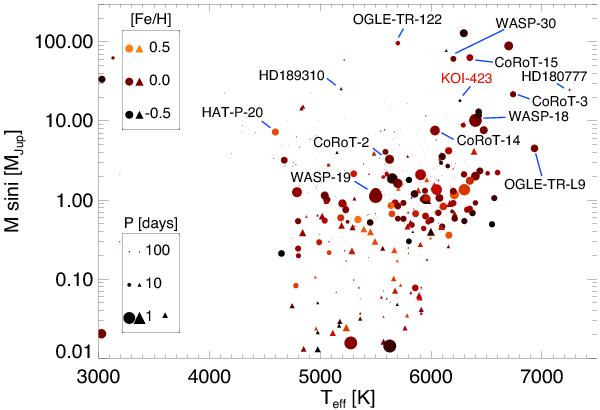Fig. 12

Values of the stellar effective temperature and mass of the companion for systems containing a companion in the planet, brown dwarf, or M-dwarf mass range. Transiting/eclipsing systems are shown by circles, and systems only detected in radial velocimetry are shown by trianges (in which case the mass value corresponds to the mass times the sine of the inclination of the orbit with respect to the observer). The size (area) of the symbols is inversely proportional to the orbital period (see labels). The metallicity of the parent star is shown by the symbol color (see labels). Some objects deemed important for understanding the link between these parameters are labeled. The error bars on the masses are small (~10%) and would be barely visible in this diagram. The error bars on the effective temperatures are believed to range from ~100 K to up to ~300 K (for example for the faint OGLE-TR-122).
Current usage metrics show cumulative count of Article Views (full-text article views including HTML views, PDF and ePub downloads, according to the available data) and Abstracts Views on Vision4Press platform.
Data correspond to usage on the plateform after 2015. The current usage metrics is available 48-96 hours after online publication and is updated daily on week days.
Initial download of the metrics may take a while.


